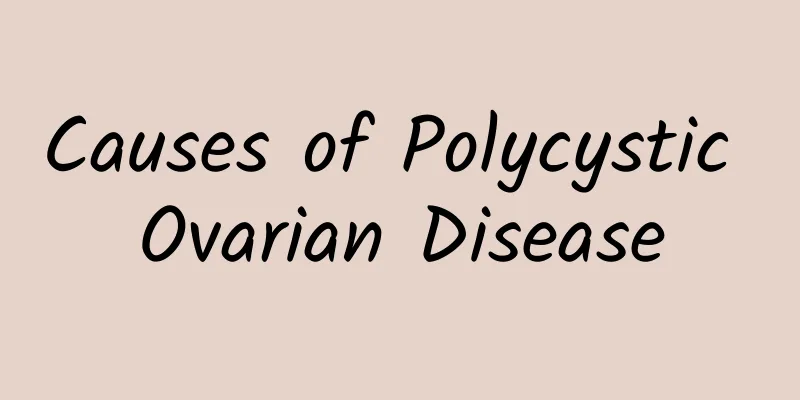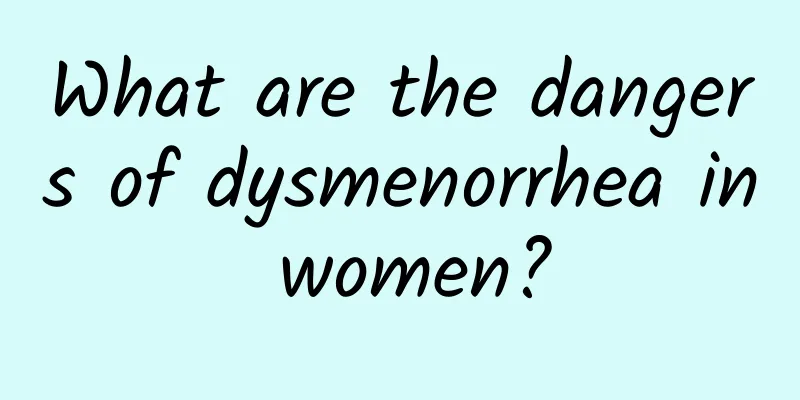Causes of Polycystic Ovarian Disease

|
Polycystic ovary syndrome is a common syndrome in women, and with the indifference of many female patients, the incidence of polycystic ovary syndrome is getting higher and higher. As a disease of endocrine and metabolic abnormalities, the causes of polycystic ovary syndrome are very complicated. The harm caused by polycystic ovary to women's health is also very large, and it is necessary to find out the cause and treat it with medicine in time. Causes of Polycystic Ovarian Disease 1. Hypothalamic-pituitary function problems Hypothalamic-pituitary function problems are the key reason why women cannot get pregnant, which is reflected in the fact that aromatase converts excessive male hormones in the female patient's jugular vein into unnecessary male hormones, or abnormal metabolism of steroid hormones produced by the female ovaries. Finally, it causes the female patient to ovulate slowly. 2. Hyperprolactinuria Because many patients with polycystic ovary have pRL protein kinase in their adrenal cytoplasm, which in turn secretes androgens to stimulate female adrenal cells. This is the reflection of hyperprolactinuria in patients with polycystic ovary. 3. Abnormal adrenal function The vast majority of female patients will have metabolic abnormalities and abnormalities in the relationship between the hypothalamus-pituitary-uterine ovarian axis. These are all caused by the continuous increase in the metabolism of male hormones due to adrenaline in patients with PCOS. 4. Genetic factors Some women with polycystic ovary syndrome also have symptoms due to abnormalities in the number and structure of chromosome X and the absence of the long arm of chromosome X. Although most patients have normal karyotypes, this is probably caused by the inheritance of dominant genes. Early symptoms of polycystic ovary syndrome 1. Menstrual disorders: The most common symptom of cystic ovarian syndrome is irregular menstruation. Patients usually experience infrequent menstruation and amenorrhea. Many patients also experience uterine bleeding, and the menstrual cycle and menstrual volume are very irregular. 2. Infertility: Polycystic ovary syndrome can hinder women's ovulation period, leading to infertility. 3. Excessive hair and acne: Women with polycystic ovary syndrome usually have excessive hair, which is caused by hyperandrogenism, causing the growth of hair on women's bodies to show a male tendency. It can also cause oily skin and acne in women, which is because the patient's body's excessive androgen stimulates the sebaceous glands. 4. Obesity: More than half of the patients with polycystic ovary syndrome suffer from obesity, which is the most clinical symptom of this disease. |
<<: How long does it take for ovulation to occur in polycystic ovary syndrome?
>>: What does polycystic changes in the left ovary mean?
Recommend
How to deal with cervical erosion during pregnancy? Pregnant women should pay attention to two aspects of cervical erosion
During pregnancy, women's physiological healt...
What are the effective measures to prevent pelvic inflammatory disease?
Women must pay attention to daily care during the...
Can women really relax after menopause?
Modern life is fast-paced and stressful, and the ...
Hospital specializing in the treatment of congenital absence of vagina
How to choose a hospital that treats congenital a...
Will cervical warts heal on their own?
Research and surveys have shown that the chances ...
If you don’t want to look old and ugly during the New Year, nutritionists can eat this slimming and antioxidant food!
At the end of the year, there are festivals and p...
Women over 40 should not take emergency contraceptive pills
There are many ways to prevent pregnancy, but the...
What are the hazards of ovarian cysts in fertility?
The ovaries are closely related to female fertili...
What are the treatments for severe cervical erosion? 5 methods are recommended for severe cervical erosion
Most women who have been to the hospital will be ...
What are the harms of bacterial vaginosis
We know that the vagina is a relatively safe envi...
A brief analysis of the hazards of cervical hypertrophy
Cervical hypertrophy is a common gynecological di...
Are you facing the contradiction that is hindering your weight loss? Is it possible to avoid sugary drinks? Dr. Ma Wenya helps you find your weight loss blind spots
Isn’t losing weight just about eating less and ex...
Can a cervical cyst turn into cancer?
Can a cervical cyst turn into cancer? Cervical na...
Hyperprolactinemia
Hyperprolactinemia is the most common pituitary d...
Introducing several methods of nursing female adnexitis
Many people panic and don't know what to do a...









